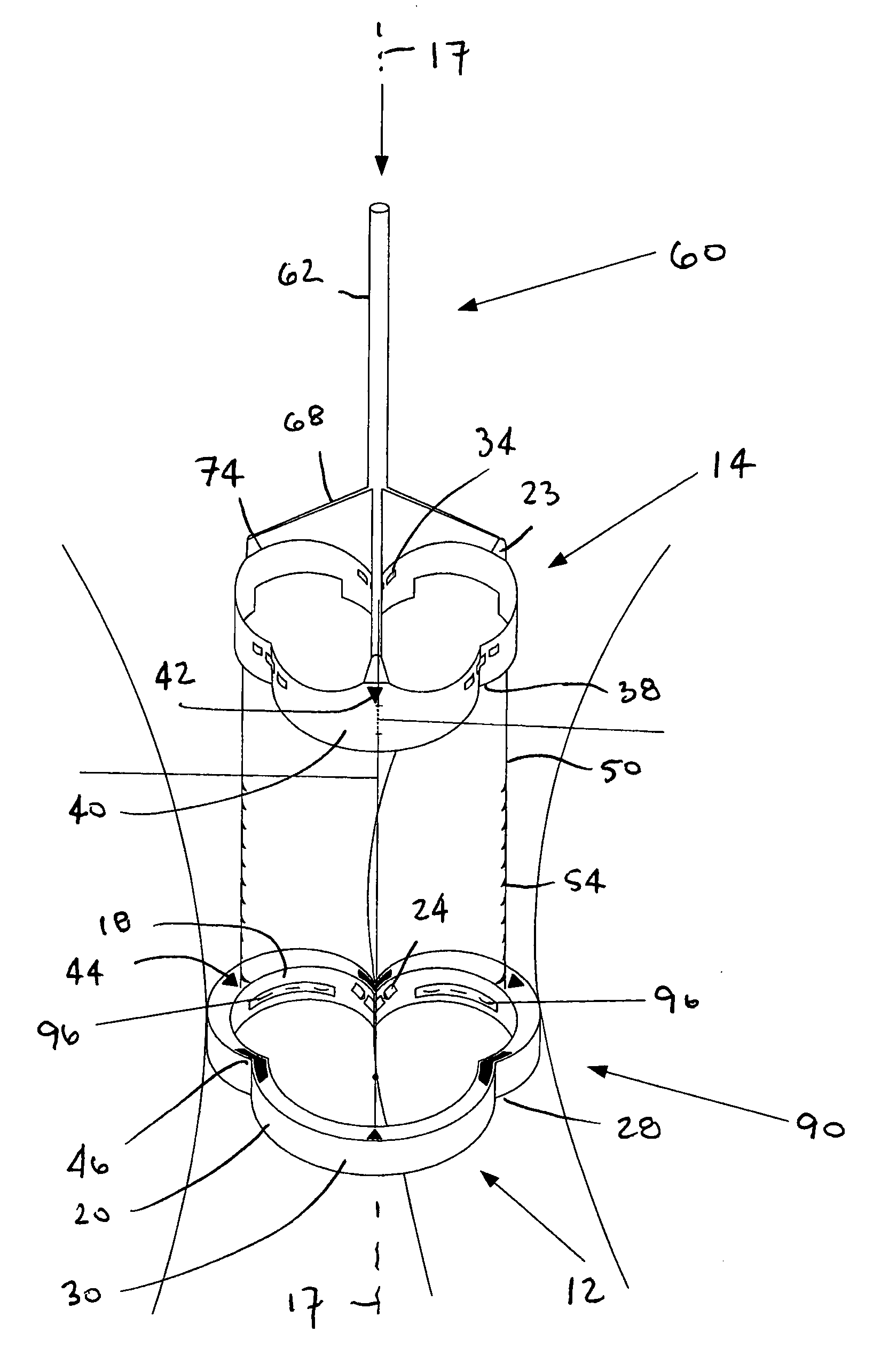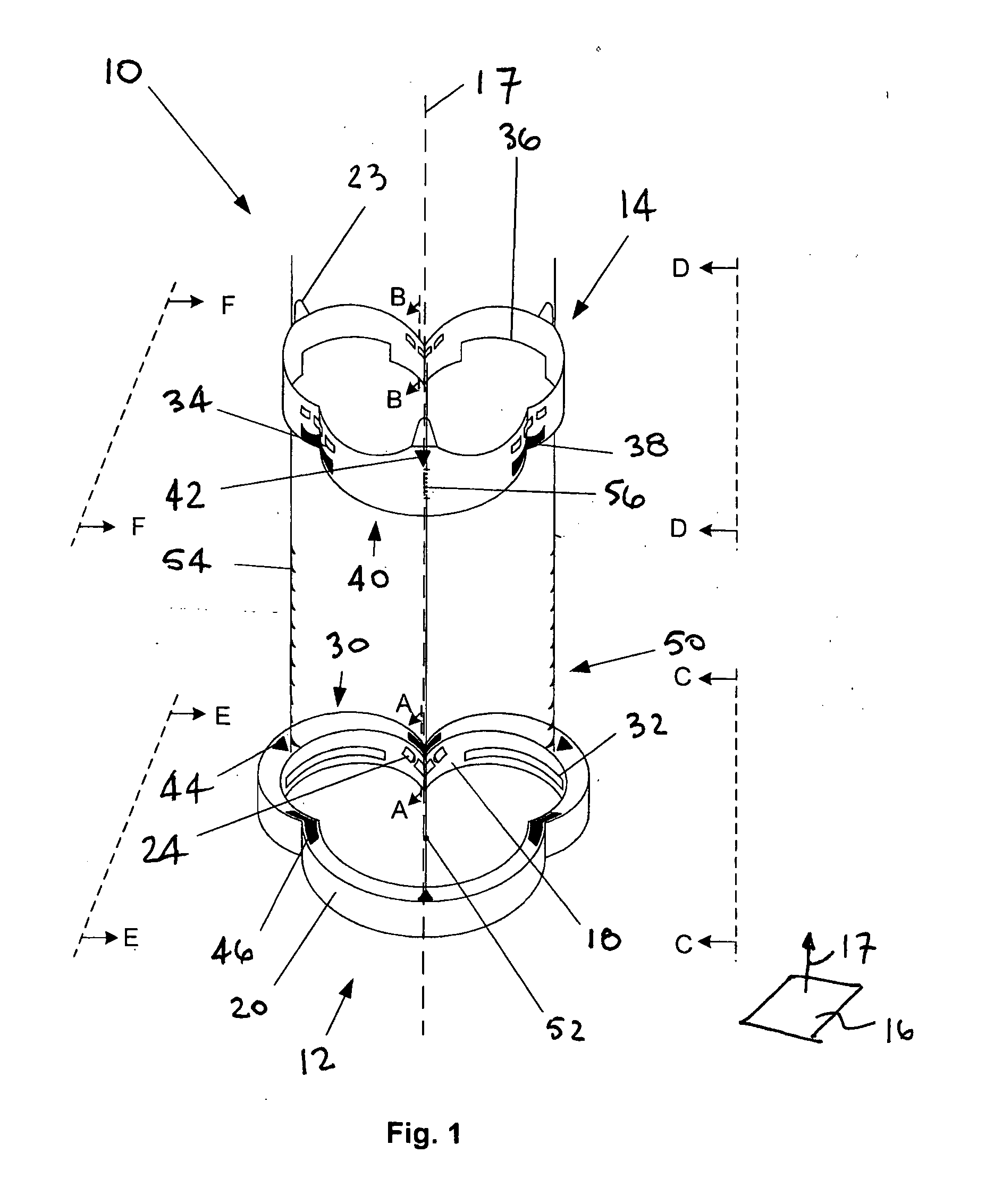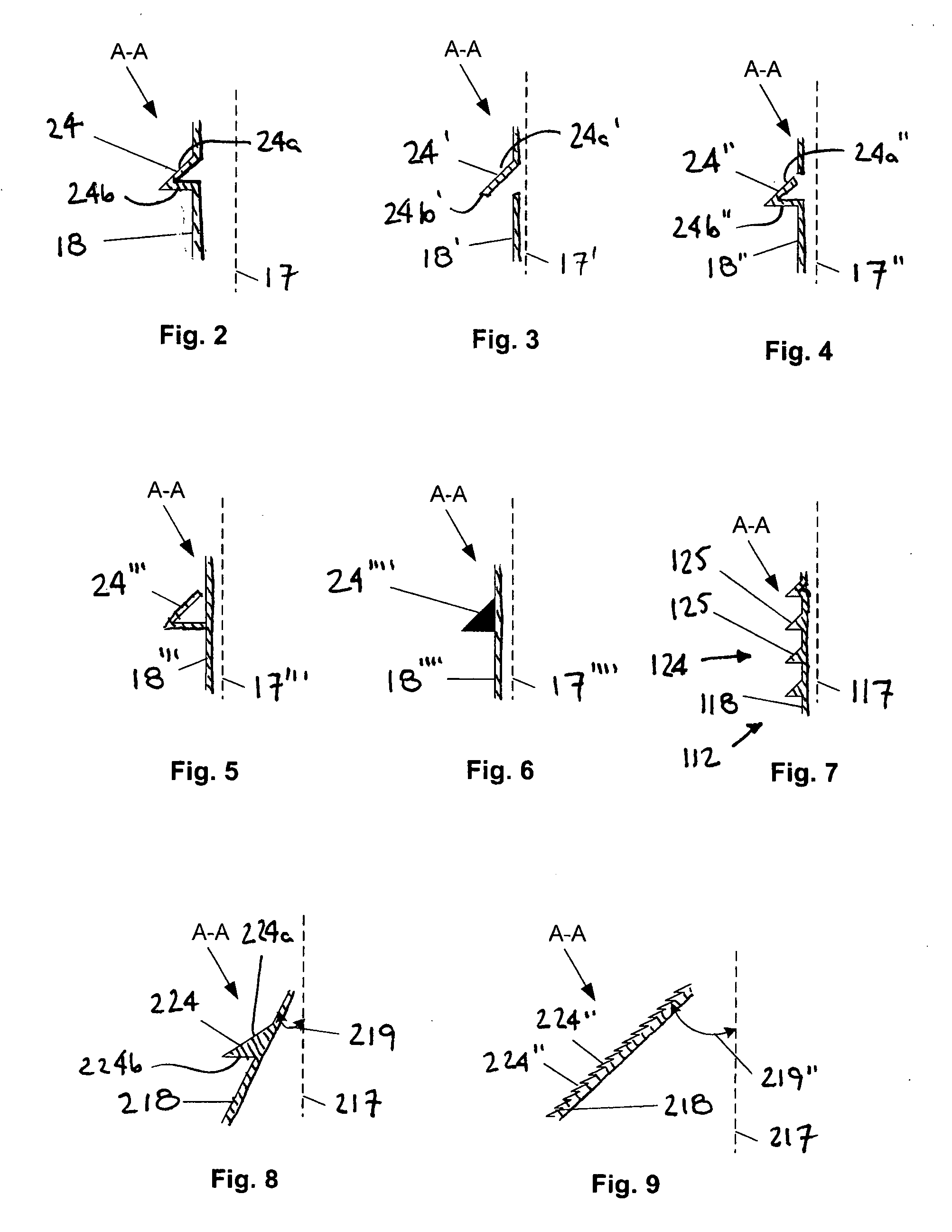Heart valve assembly and methods for using them
- Summary
- Abstract
- Description
- Claims
- Application Information
AI Technical Summary
Benefits of technology
Problems solved by technology
Method used
Image
Examples
Embodiment Construction
1. Multiple-Component Heart Valve Assemblies
[0032] Turning to the drawings, FIG. 1 illustrates a heart valve assembly 10 that generally includes a base member 12 and a valve member or “crown”14. As described further below, the base member 12 and / or crown 14 may include one or more connectors for attaching the crown 14 to the base 12 and / or one or more guides for facilitating aligning and / or connecting the crown 14 with the base 12.
[0033] The base member 12 may be a generally annular shaped body lying in a plane 16, thereby defining a longitudinal axis 17 substantially orthogonal to the plane 16. The base member 12 may have a noncircular shape within the plane, such as a multi-lobular shape. Preferably, the base member 12 has a tri-lobular shape, i.e., including three lobes 30 separated by three cusps 28, corresponding generally to a cross-section of a biological annulus within which the base member 12 may be implanted, as explained further below. It will be appreciated that the b...
PUM
 Login to View More
Login to View More Abstract
Description
Claims
Application Information
 Login to View More
Login to View More - R&D
- Intellectual Property
- Life Sciences
- Materials
- Tech Scout
- Unparalleled Data Quality
- Higher Quality Content
- 60% Fewer Hallucinations
Browse by: Latest US Patents, China's latest patents, Technical Efficacy Thesaurus, Application Domain, Technology Topic, Popular Technical Reports.
© 2025 PatSnap. All rights reserved.Legal|Privacy policy|Modern Slavery Act Transparency Statement|Sitemap|About US| Contact US: help@patsnap.com



